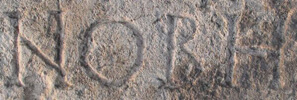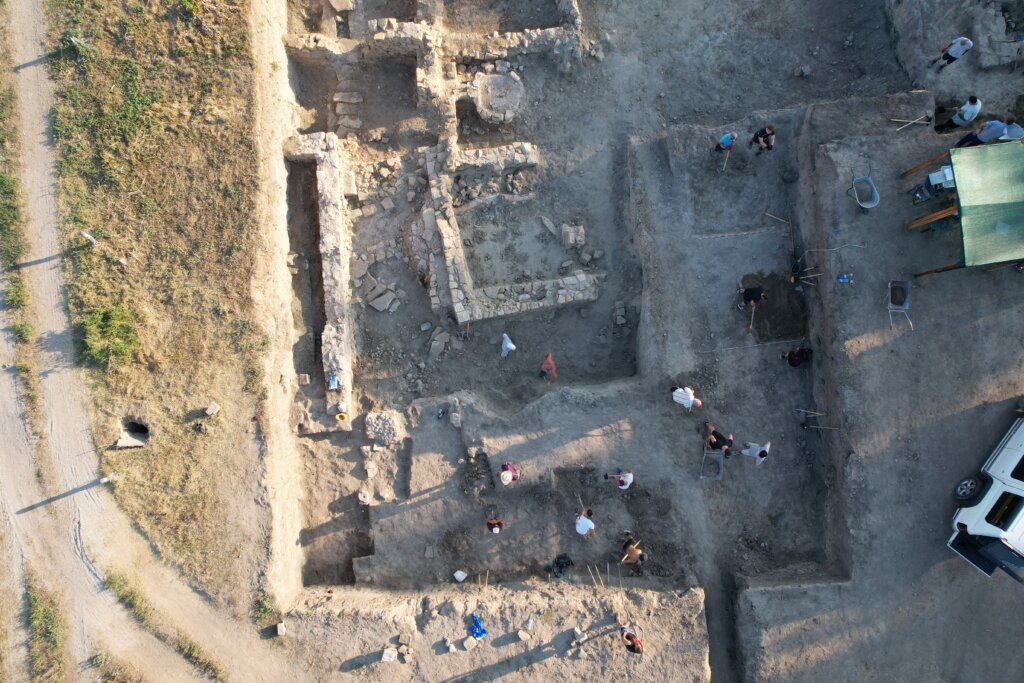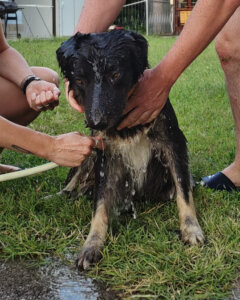Summer ’25 with the Centre, III

As in Montenegro, the season began with extreme heat – temperatures soared to nearly 40°C. Fortunately, thanks to renovations in the spring, we had decided to install air conditioning units in the base; otherwise, work indoors would have been impossible. After the first week the weather stabilized somewhat, with temperatures dropping to a “bearable” 33–36°C.
More than 30 workers set out into the field, beginning exploration of the southern part of the great legionary complex – most likely the residence of the first centurion of the first cohort of Legio I Italica. Each year the open-area trenches become deeper because of the natural slope of the terrain. This season, in order to reach the level of the wooden barracks of Legio VIII Augusta, we have had to dig through more than three meters of archaeological layers. The rich stratigraphy and dense settlement slow the work considerably. Civilian walls, pits, and cut features complicate the excavations, but also make them more rewarding, requiring both organizational skill and scientific concentration.
We have now reached layers dating to the 3rd century AD, and the legionary walls marking the southern boundary of the complex are gradually emerging. If our assumptions are correct, we are dealing with a truly monumental building, occupying over one third of a hectare – an impressive residence indeed!
Each campaign is usually marked by a dominant category of finds. This year, it seems, will be the “year of coins.” Our Bulgarian colleagues joke that this is because from 1 January 2026 Bulgaria will adopt the euro, and the “Romans” are rushing to exchange their savings for the new currency. Even though we are only halfway through the season, coins already make up the majority of nearly 150 inventoried artefacts. From a scholarly perspective, this is excellent news, as it will allow us to refine our chronological frameworks with much greater precision.
Among the many kilograms of so-called mass material, one group stands out in particular – late antique ceramics, which until now had been relatively rare. It seems that this year Novae has decided to “fill in the gaps” and enrich our dataset with new evidence.

Work is also intense at the base, not least because we are simultaneously implementing two EU-funded projects. This requires additional documentation, including a brief return to the site of the military hospital (valetudinarium), where excavations had concluded back in 2010. Unfortunately, the projects also mean a heavy schedule of online meetings.
At the same time, preparations are underway for the forthcoming publication of the sector currently under study. Scholars from Poland and Italy are working in the base on selected groups of finds, including ceramics, stamped building materials, and lamps. In September, two more colleagues from our Research Centre will arrive to continue documentation work. Our return home is planned only after 20 September – and in this year of unpredictable weather, it is not impossible that winter may find us still in Novae!
As always, Novae attracts visitors. This year we were glad to welcome colleagues from Valencia – ¡hola!
At the base, routine continues with cleaning and minor repairs, which will be further pursued in the autumn. We also look after our faithful companions in archaeological hardship: our guardian dog Django, who follows us into the field every day, and five somewhat lazier cats. Out of gratitude we gave Django a bath – the season had left clear traces on his appearance and smell – though he did not entirely appreciate our good intentions…

Finally, a piece of breaking news from our excavations in Albania: the Prime Minister of Albania has just announced that the site where we are working will now be placed under state protection! – https://www.facebook.com/share/p/19RnbMcrYh/
